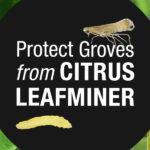Enogen Corn Boosts Feed Efficiency Gains
Beef producers can achieve a potential increase in feed efficiency by using Enogen corn.

Beef producers can achieve a potential 5% increase in feed efficiency while also helping to improve their environmental footprint by using Enogen® corn for feed.1 That’s the takeaway from a new life cycle assessment released by Syngenta Seeds and the University of Arkansas Resiliency Center.
Enogen helps cattle convert starch to sugars more efficiently, resulting in more readily available energy for livestock. In research studies at leading universities, Enogen has shown potential to increase feed efficiency by 5%,2 which can help cattle producers improve profit potential for their operations. The assessment shows that this nutritional boost helps improve efficiency in the farming, backgrounding and feedlot operations involved in livestock production. As a result, for every 1,000 head of finishing beef cattle, producers can potentially achieve the following environmental benefits:
- Reduction of greenhouse gases equivalent to removing 35 passenger cars from the road for one year.3
- Decreased land use for growing crops to feed the animals, equivalent to 50 American football fields.3
- 6 million fewer gallons of water, enough to fill nine Olympic-size swimming pools.3
- Enough energy saved to power 22 average homes for a year.3
To put the impact of these benefits into perspective, there are about 15 million head of beef cattle on feed at any given time in the U.S., and the industry processes approximately 35 million head of beef cattle each year.4
“The potential environmental benefits of feeding Enogen corn to finishing beef cattle could be very significant as the technology becomes more widely adopted,” says Duane Martin, head of Enogen marketing at Syngenta.
For more information on Enogen corn , go to enogenfeed.com.
1G. Thoma, M. Matlock, and M. Christy. 2020. Analysis of Life Cycle Impacts of Using Enogen Feed Corn in Feed Rations in Beef Cattle Production, University of Arkansas Resiliency Center.
2University of Nebraska-Lincoln Research Studies, 2013–2017; Kansas State University Research Studies, 2016–2018; Penn State University Research Study, 2020.
3Based on LCA conducted by the University of Arkansas Resiliency Center, 2020, for 1,000 head, backgrounding through feed yard, using these experimental data and resources: Transl. Anim. Sci. Volume 3, Issue 1, January 2019, 504–512, https://doi.org/10.1093/tas/txy121 (Exp 2); Kansas Agricultural Experiment Station Research Reports: Vol. 4: Issue 1, https://doi.org/10.4148/2378-5977.7543 (Exp 1); https://www.epa.gov/energy/greenhouse-gas-equivalencies-calculator; and https://www.eia.gov/energyexplained/units-and-calculators/energy-conversion-calculators.php.
4“Cattle on Feed Report,” released Feb. 19, 2021, by the National Agricultural Statistics Service, Agricultural Statistics Board, United States Department of Agriculture.
2 Min Read


















